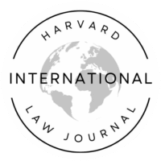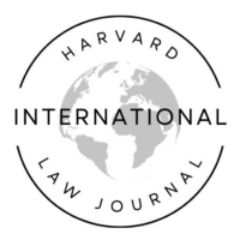By Ambassador Luis Gallegos* and Daniel Uribe**
The possibility of establishing a world court on business and human rights is one of the elements discussed in the current debate over the adoption of an international legally binding instrument on transnational corporations and other business enterprises with respect to human rights in the United Nations Human Rights Council. Even though the existence of a world institution could bring important benefits for the development of international law and protect victims of human rights abuses by corporations, it is also necessary to draw up an inventory of different factors that could interfere in the design of an instrument of binding nature.
The world court on business and human rights could be competent to hear cases brought by victims of human rights abuses perpetrated by corporations and to decide the legal liability of such corporations on the basis of an effective international legally binding instrument on business and human rights. Still, the establishment of this court may face issues regarding funding, the role of States in proceedings, and matters of access to the court, including costs and legal representation of victims.
This Article will not deal directly with these issues or argue in favour of or against the establishment of a world court on business and human rights. Instead, it will examine the feasibility of establishing the court by examining previous attempts to recognize the jurisdiction of international tribunals for human rights abuses committed by private entities.
I. Previous Attempts
The international community has taken various efforts to condemn abominable acts against humanity committed by private individuals and other private entities in international law. Particularly during the nineteenth century and the middle of the twentieth century, the international community promoted the establishment of international tribunals for the protection of human rights and human dignity.
The establishment of international courts against slave trade during the early 1800s[1] constituted the first attempts to condemn such acts. Various treaties signed by Great Britain with the Netherlands, Portugal, and Spain created the antislavery courts that had jurisdiction to adjudicate cases of captured slave ships[2] with the particular aim to suppress the slave trade. During the lifespan of the treaty, over 600 cases were heard by the courts and 80,000 slaves were found in captured vessels[3].
As another example, the egregious violations of human rights committed during the Second World War led to discussions on corporate responsibility against the “major war criminals of the European Axis.”[4] However, although the contribution of German businesses during the war ranged from profiting from a slave work force to supplying Zyclon B, the gas used by the SS in Auschwitz to murder more than 1 million people,[5] the tribunals of Nuremberg recognized only individual criminal liability for a number of high-level management officials of different corporations. The tribunals also viewed businesses as an instrument necessary to commit the crime, but not as criminal organizations. Likewise, the idea of prosecuting corporations—legal entities—for similar crimes was included in the draft of the Rome Statute, but it did not find support for various reasons, including the fact that not all state-parties recognised such corporate criminal liability in their jurisdictions.[6]
Important steps have also been taken during the twenty-first century on the issue of business and human rights. The adoption of the UN Global Compact’s governance framework by the U.N. Secretary General in 2005, the U.N. Human Rights Council’s embrace of the Protect, Respect, and Remedy Framework in 2008, and the development of the U.N. Guiding Principles on Business and Human Rights in 2011, to name but a few, are good examples of such efforts.
II. A World Court on Business and Human Rights?
The negotiations on an international legally binding instrument on business and human rights have fired up long-standing discussions on the design of an international organization in charge of the enforcement of corporate human rights obligations. During the debate that led to the adoption of Resolution A/HRC/RES/26/9[7] and the first negotiation on a binding instrument on business and human rights, held by the Open Ended Intergovernmental Working Group (OEIWG) in July 2015,[8] some stakeholders proposed a world court on business and human rights.
First, it is important to recognise an effective international legal framework on business and human rights as an essential step towards protecting victims’ access to remedies for corporate wrongdoings. An international, legally binding instrument could clarify the obligations of corporations to respect human rights and guarantee the rights of victims from corporate-related human rights abuses to access remedies. In the case of businesses, it could level the playing field for the international operation of corporations because the instrument will establish authoritative means to resolve conflicts arising from the law in different jurisdictions. It would also create a mechanism to respond to corporate abuses in a “concerted fashion,”[9] thus eliminating unfair competitive advantages for corporations around the world.
This “concerted” approach for the access to remedies and legal standards on business and human rights will not undermine states’ obligation to oversee the conduct of corporations, as it would operate under the international principle of subsidiarity, by which international institutions may exercise jurisdiction in cases where national legal systems are unwilling or unable to fulfill their primary obligation to protect human rights and redress human rights violations, and could enhance domestic efforts to protect human rights through international cooperation and legal coherence, as it will impose common international standards on the matter.
Second, the feasibility of creating an international tribunal on business and human rights could be examined in light of previous attempts. The antislavery courts of the nineteenth century are an important precedent for the OEIWG, mostly because they challenged the dominant economic model at that time. The slave trade was believed to be essential for the viability of colonial economies and it was unthinkable at that time to impose restrictions to this profitable enterprise. These courts also introduced an institutional framework based on mixed commissions formed by judges belonging to the state parties to the treaty, who were assisted by a local registrar of the place where the court was seated for the collection of evidence and other administrative tasks. Such a framework could serve as a model for the design of the world court of business and human rights. The establishment of these courts as an enforcement mechanism of international treaties, in cooperation with other domestic legislative efforts, was the cornerstone for the effective suppression of the transatlantic slave trade.[10]
Similarly, even though the Nuremberg Trials limited themselves to judging individuals for the crime of “membership” in a criminal organization with the sole purpose of easing the avenue for the prosecution of a large number of persons through more expeditious trials,[11] this approach was not the only option. Abraham L. Pomerantz, Chief Counsel at the Nuremberg Trials, intended to prosecute business entities on the basis of corporate liability. The approach suggested by Pomerantz could also guide the work of the OEIWG if the feasibility of a world court if such element is argued.
Pomerantz suggested that crimes committed by corporations in the Second World War complied with the common law test of liability because the acts were (1) within the scope of the business, (2) committed or ordered by a superior agent (senior manager or solely owner), and (3) constituted crimes for which the punishments included fines and forfeitures of property.[12] Regrettably, Pomerantz’s position was not followed in the indictments of industrialists in the subsequent Nuremberg trials due to the economic and political interests in reconstructing post-war Europe.[13]
Conclusion
These examples underline the common interest of the international community in addressing a systematic and evolving approach for the provision of more effective mechanisms aimed at the protection of human rights and cope with the always dynamic and flexible domain of the liberalised market and the world of large-scale trans-boundary operations of corporations.
Discussions of the feasibility of a world court on business and human rights should consider different elements that would ensure its efficiency and effectiveness, including legal representation and assistance for victims, the role of states in proceedings, and other administrative and procedural issues, such as recollection of evidence and enforcement of judgments through international cooperation. The lessons learned from the past could guide these discussions with the purpose of advancing towards a fairer and more equal world.
Finally, stakeholders could use these lessons to propose avenues to ensure that the international framework for the protection of human rights is best suited to the task, while not delaying the adoption of an international legally binding instrument on business and human rights.
* Ambassador Luis Gallegos is the Permanent Representative of Ecuador to the United Nations and a member of the U.N. Committee against Torture.
** Daniel Uribe is a Visiting Fellow at the South Centre.
[1] See Jenny S. Martinez, Antislavery Courts and the Dawn of International Human Rights Law, 117 Yale L. J. 550, 641 (2008).
[2] See id. at 576 n.1..
[3] See Leslie Bethell, The Mixed Commissions for the Suppression of the Transatlantic Slave Trade in the Nineteenth Century, 7 J. Afr. Hist. 76 (1966), cited in Martinez, supra note 1, at 553 n.1.
[4] United Kingdom of Great Britain and Northern Ireland, United States of America, France, and Union of Soviet Socialist Republics, Charter of the International Military Tribunal, Annex to the Agreement for the Prosecution and Punishment of the Major War Criminals of the European Axis (Aug. 8, 1945) art. 1 [hereinafter London Agreement].
[5] See Jonathan A. Bush, The Prehistory of Corporations and Conspiracy in International Criminal Law: What Nuremberg Really Said, 109 Columbia L. Rev. 1015 (2009).
[6] Kathryn Haigh, Extending the International Criminal Court’s Jurisdiction to Corporations: Overcoming Complementarity Concerns, 14(1) Australian J. of Hum. Rts. 202–203 (2008).
[7] Resolution A/HRC/RES/26/9 was adopted during the 26th ordinary session of the United Nations Human Rights Council on June 2014 and provided for the establishment of an Open Ended Intergovernmental Working Group (OEIWG) with the mandate to elaborate an international legally binding instrument to regulate, in international human rights law, the activities of transnational corporations and other business enterprises. U.N. General Assembly, Human Rights Council, Resolution A/HRC/RES/26/9, Elaboration of an Internationally Binding Instrument on Transnational Corporations and Other Business Enterprises with Respect to Human Rights (July 14, 2014).
[8] See United Nations Human Rights Council, Open-Ended Intergovernmental Working Group on Transnational Corporations and Other Business Enterprises with Respect to Human Rights, http://www.ohchr.org/EN/HRBodies/HRC/WGTransCorp/Pages/IGWGOnTNC .aspx (last visited May 7, 2016).
[9] Kevin T. Jackson, A Cosmopolitan Court for Transnational Corporate Wrongdoing: Why Its Time has Come, 17 J. of Bus. Ethics 759 (1998).
[10] See Jenny S. Martinez, Slave Trade on Trial: Lessons of a Great Human Rights–law Success, Boston Rev. (Sept. 1, 2007), http://www.bostonreview.net/jenny-martinez-slave-trade-on-trial, (accessed Nov. 25, 2015).
[11] International Law Commission, The Charter and Judgment of the Nürnberg Tribunal – History and Analysis (United Nations 1949), Memorandum submitted by the Secretary-General A/CN.4/5, 75.
[12] See Bush, supra note 5, at 1153.
[13] See id. at 1117−23.

